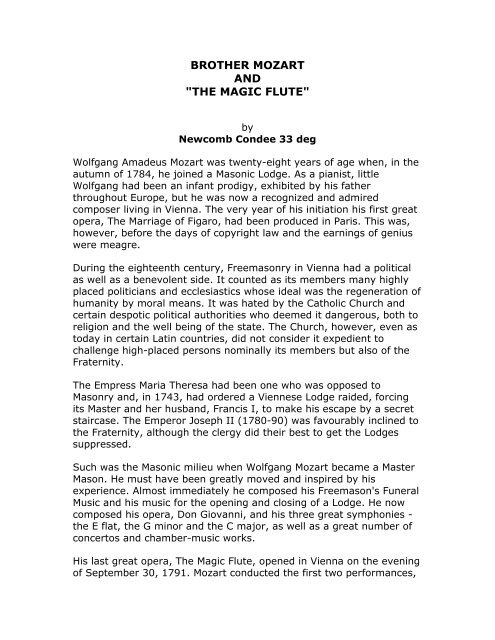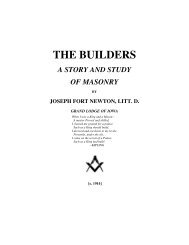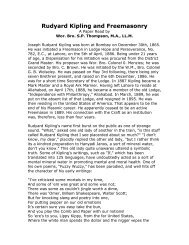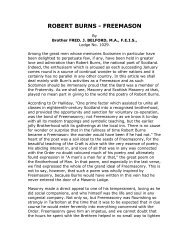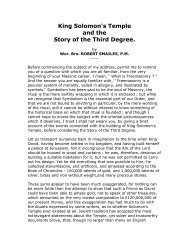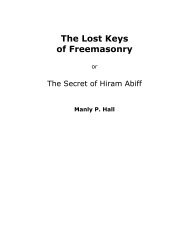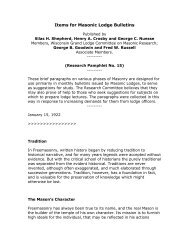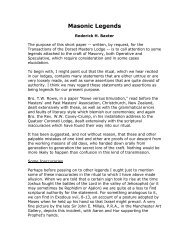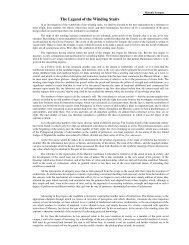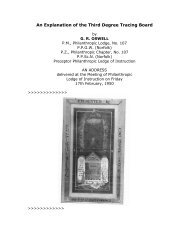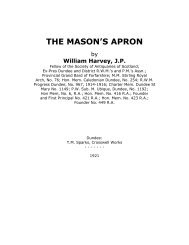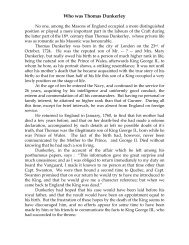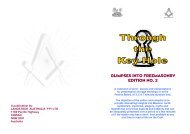BROTHER MOZART AND "THE MAGIC FLUTE" - RoseCroix.org.au
BROTHER MOZART AND "THE MAGIC FLUTE" - RoseCroix.org.au
BROTHER MOZART AND "THE MAGIC FLUTE" - RoseCroix.org.au
Create successful ePaper yourself
Turn your PDF publications into a flip-book with our unique Google optimized e-Paper software.
modeled on actual Masonic initiation rituals. Even an apparentlyunrelated incident like Tamino's fainting spell in the opening scene, forinstance, is interpreted as a reference to the beginning of such rituals,when the initiate is made to lie face down as a symbol of death to oldhabits of thought and action.Brigid Brophy, in her fine study, Mozart the Dramatist, points out theorigins of Masonic practices in the Eleusinian mysteries and Orphicmyths of the ancient world. She documents the libretto's heavy debt toThe Life of Sethos, a novel published in Paris in 1731 by the abbé JeanTerrasson Purporting to be a translation from an ancient Greek source,this book recounts the initiation of its Egyptian hero into the mysteriesof Isis. As Ms. Brophy points out, "Terrasson does not (but then onewould not expect him to) explicitly connect his Isiac mysteries withMasonry; indeed, it is possible that the real influence was the otherway about and the Masons borrowed hints for their own ritual fromTerrasson's fictionalized Egypt."Mozart and Schikaneder were also well-acquainted with the works ofShakespeare. Many fascinating parallels between The Magic Flute andThe Tempest are noted in Mozart on the Stage, by János Liebner.Sarastro, the opera's controlling force, is similar to Shakespeare'sProspero. Each plans the union of two chosen lovers but makes theway arduous in order to strengthen the bond. Monostatos and Calibanare very similar creations, symbols of our baser nature to be overcomeand cast off. The unworldly innocence of the Three Boys finds itscounterpart in Ariel, Prospero's sprightly servant and messenger.Each succeeding era has seen The Magic Flute in its own way, andeach of these interpretations has validity. Whether the opera is viewedas a light-hearted fantasy, Enlightenment allegory, veiled Masonicritual, or a lost battle in the struggle for feminine equality, it speaksanew of magic and maturation to each successive generation.Freemasonry in CrisisSince the Masonic lodges operated openly in Mozart's Vienna andnumbered among their members many of the highest officials of therealm, we may ask ourselves why two Masons, Mozart andSchikaneder, felt it necessary to compromise Masonic silence andportray so many of the society's secret symbols and beliefs in a publicentertainment like The Magic Flute. If they, as the eminent scholar H.
C. Robbins Landon has written, "risked a long shot - to save the Craftby an allegorical opera," what was the peril by which the oncepowerfulsociety was threatened? What forces ultimately c<strong>au</strong>sed theirattempt to be futile, ending in the complete suppression of Masonryonly four years later?The answers are to be found in the revolutionary cross-currents of thatturbulent era, and in the involvement of many of the Masons, evenmany of the highly placed aristocrats, in activities that threatened thethrones of Europe.Freemasonry evolved from some of the craftsmen's guilds of theMiddle Ages (which helps explain its name and why its adherents referto it as the Craft), but its rise to prominence began in the mideighteenthcentury. Its espousal of Wisdom, Be<strong>au</strong>ty, Knowledge, andTruth made it attractive to adherents of Enlightenment philosophies(with their de-emphasis of traditional religion in favour of individualmoral advancement), which included most of the best minds in Europeand America. Viennese Masons included Mozart, who joined in 1784,his friend and admirer Franz Joseph Haydn, initiated in 1785, andMozart's father Leopold, who joined at his son's instigation in 1785 andadvanced to the third degree of membership in just sixteen days. Thehead of Mozart's lodge was Prince Nikol<strong>au</strong>s Esterházy, Haydn's patronand a high-ranking diplomat in the imperial government. Freemasonrythrived in the empire despite the enmity of the Roman Catholic Church(a Papal Bull condemning the Craft in 1738 was simply ignored inAustria and its territories) and that of the powerful Empress MariaTheresa (whose younger son, the future Leopold II, had reputedlybeen elevated to the Eighteenth Degree of the Scottish Rite ofMasonry).But although a succession of Austrian emperors took a benign view ofMasonry's espousal of the Enlightened notion that all men areperfectible through Reason, they naturally smelled treason whencertain of the Masons went a step further and argued that in a fullyenlightened society there was no need for monarchs. Masonry'sinsistence on shrouding its inner workings in secrecy worked against it,for the code of silence allowed treasonous sects to flourish within theCraft and at the same time c<strong>au</strong>sed government officials to imagineMasonic excesses much greater that those that actually occurred. Inthe end, the emperor felt he had no choice except to ban Masonryoutright.


